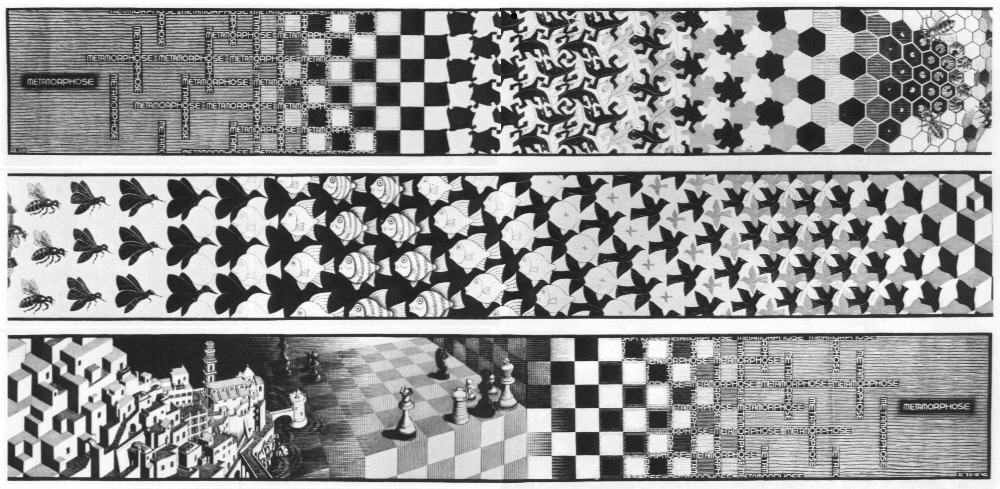I'm afraid that, at least for these first few posts, it's going to sound a lot like a summary of a chapter of Godel, Escher, Bach (GEB). Hopefully my essay isn't like that.
Hofstadter begins the book with a puzzle of his own invention, which I will reproduce here. The MU-puzzle includes three and only three letters: M, I, and U. Groups of these three letters are referred to in the system as "strings" (which include MIU, IMMUMMU, MIUIUIUIU, and such). The puzzle consists of beginning with a given string, MI, and trying to produce the string "MU" within the limits of the following rules:
1. If the string's last letter is "I", you can add a "U" to the end.
2. You can produce a new string by duplicating everything after the "M". For example, MI can become MII, MUIUI can become MUIUIUIUI, MUU can become MUUUU, etc.
3. You can replace "III" with a "U" at any point in the string if you wish.
4. If you have a "UU" anywhere in the string, you can delete it (the "UU", not the string).
If you're a total nerd like I am, you might actually find some enjoyment in trying to produce the string "MU". I didn't, but Hofstadter explains in GEB that he doesn't mean for the puzzle to be solved (although he says the solution is later in the book). Solving the puzzle itself gives you experience with some of the workings of formal systems.
Hofstadter refers to given strings like "MI" as axioms, statements that you must assume to begin with since they cannot be proven. Strings produced from the axiom are called theorems, since they are provable on the basis of the axiom and the given rules.
The reason that formal systems are such a frequently-used tool of GEB is because humans and computers treat them so differently. I played with the MU-puzzle for maybe five to ten minutes before giving up. I don't know if there really is an answer, or if the author will present some "cheater" solution later in the book. But if it is truly impossible to produce "MU", a computer would continue attempting the theorem indefinitely, whereas a human would, eventually, give up.
In Hofstadter's words, jumping out of the system is a skill that seems almost wholly unique to humans. Humans "jump out of the system" by giving up on a task, postponing a task, trying to change the rules, etc. And jumping out of the system isn't always bad; in fact, exiting a system is many times an intelligent move. Computers inherently have a problem with exiting systems because staying in the system is usually what they are programmed to do.
Hofstadter then uses the three letters of the MIU-system to describe three different ways to approach a task or a system:
-Mechanical mode (M-mode), in which the task is carried out systematically much like a computer would do,
-Intelligent mode (I-mode), in which the subject learns how to use the rules and creates new ways of solving the task, much like a human would do, and
-Un-mode (U-mode), which Hofstadter doesn't describe at this point, but I assume involves jumping out of the system or changing the rules, thereby altering the internal system you began with.
Bored yet?

No comments:
Post a Comment